[Sagebrush: The Genus Artemisia East of the Cascade
Mts. of Oregon and Washington]
Mountain Big Sagebrush, Vasey Sagebrush
Artemisia tridentata ssp. vaseyana
Synonyms: Artemisia tridentata var. pauciflora, Artemisia tridentata var. vaseyana, Artemisia vaseyana, Seriphidium tridentatum ssp. vaseyanum, Seriphidium vaseyanum
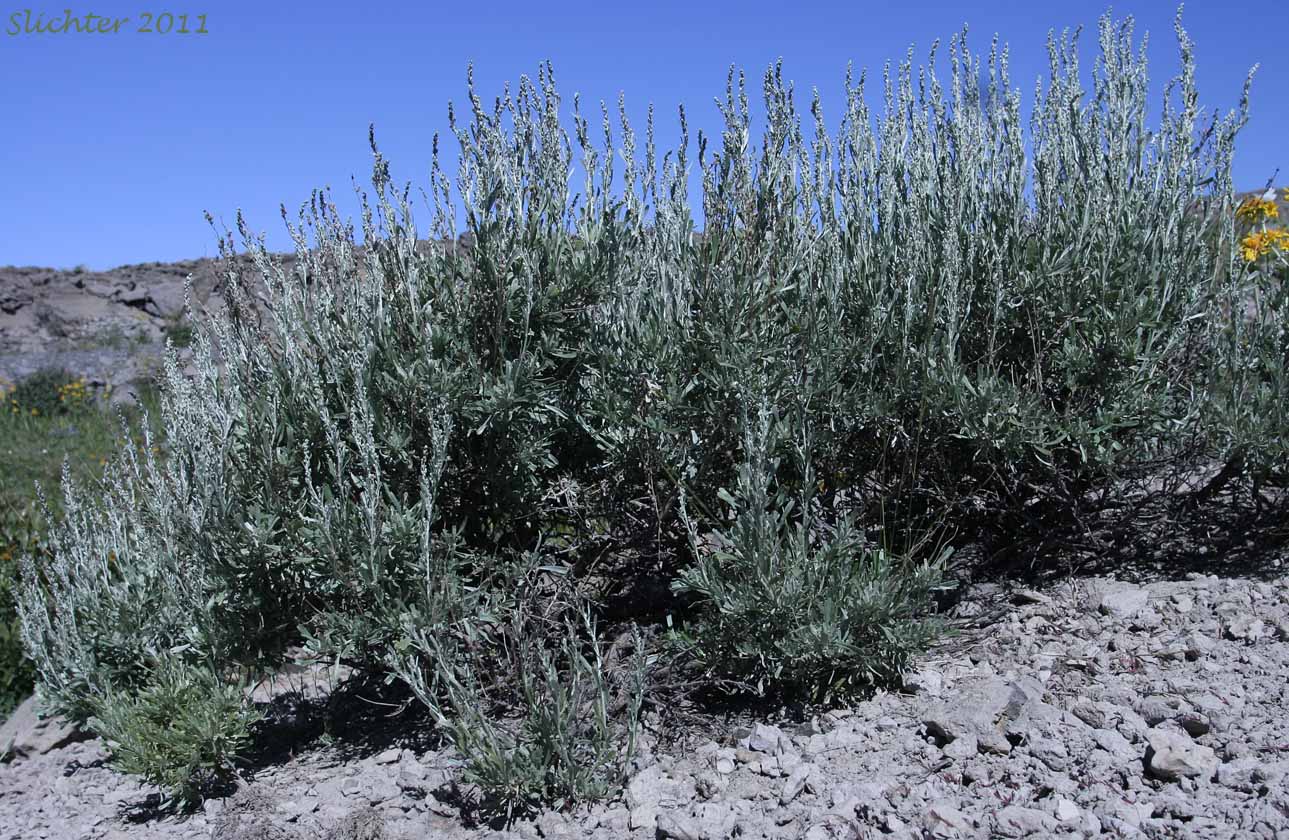
Mountain big sagebrush (ssp. vaseyana) as seen along the North Loop Road about one mile downhill from the Kiger Gorge Overlook, Steens Mountain, Harney County, Oregon.........September 2, 2011. The uniform, flattened top (with the branches or inflorescence arising to about the same height) of ssp. vaseyana is apparent in this photo.
Characteristics:
Big sagebrush is an aromatic, woody shrub, freely branched above,
from 4-30 dm tall. Young stems are silvery-gray, while the older stems become
grayish brown. The oldest stems have bark which is noticeably shredded.
The leaves are gray, crowded and narrowly cuneate with 3 rounded
teeth or lobes on the blunt tip. They are silvery green above and below and
strongly scented. The leaves alternate on the stems, and they may be both deciduous
and winter persistent.
The flower heads are loosely spread out along the tips of the
branches. The flower heads are soley discoid with 3-8 flowers per head. Big
sagebrush flowers from late summer into fall.
Subspecies of Big Sagebrush:
ssp. tridentata: Plants generally over 1 meter high. Plants
have a rounded, irregular apearance. The inflorescences begin at various levels
and rise to various heights.
ssp. vaseyana: Shorter than 1 meter in height. Plants have
a flat-topped appearance with most of the numerous inflorescences arising to
about the same height. Leaves 1-3 cm long. This species is found from thefoothills
to well up into the mountains, often between 1600-2300 meters.
ssp. wyomingensis: Shorter than 1 meter in height. Plants
have a rounded, irregular appearance. Leaves mostly 1-2 cm long. This variety
is generally found in the plains in the foothills, but may be found occasionally
up to 2700 meters.
Importance:
Sagebrush was used by Native Americans for shelter, cordage,
and basketry. The fruits were used fresh, dried, or pounded into a meal.
As browse, it is lightly used by deer.
Habitat:
Big sagebrush may be found on dry hills and plains, but may extend up to timberline in open habitats. Big
sagebrush is often found on rocky and gravelly basaltic soils, and has a special
affinity to granitic substrates.
Range:
Big sagebrush may be found east of the Cascades and Sierra Nevada, covering the dry plains
of western North America.
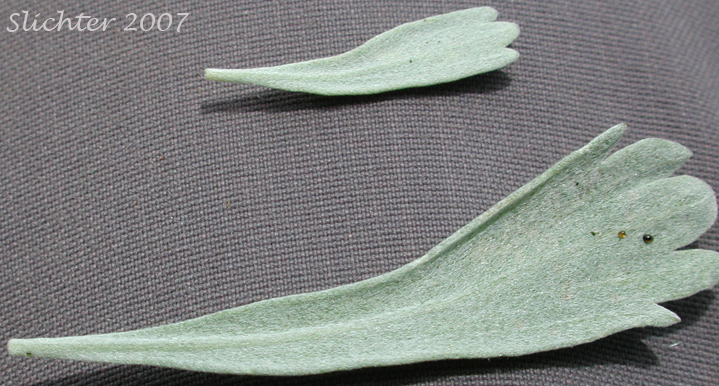 -
- 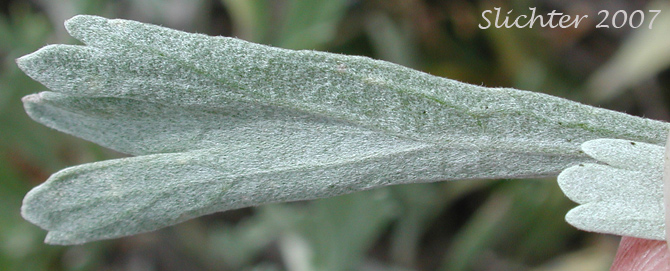
These images show several views of the leaves of mountain big sagebrush (ssp. vaseyana) as seen along the Umatilla Rim Trail on the northeastern edge of the North Fork Umatilla Wilderness.......June 24, 2007. Note that the leaf tips may have more than 3 short lobes.
 -
- 
Mountain big sagebrush blooming along Forest Service Road 16 at Summit Prairie, Malheur National Forest........August 20, 2011.
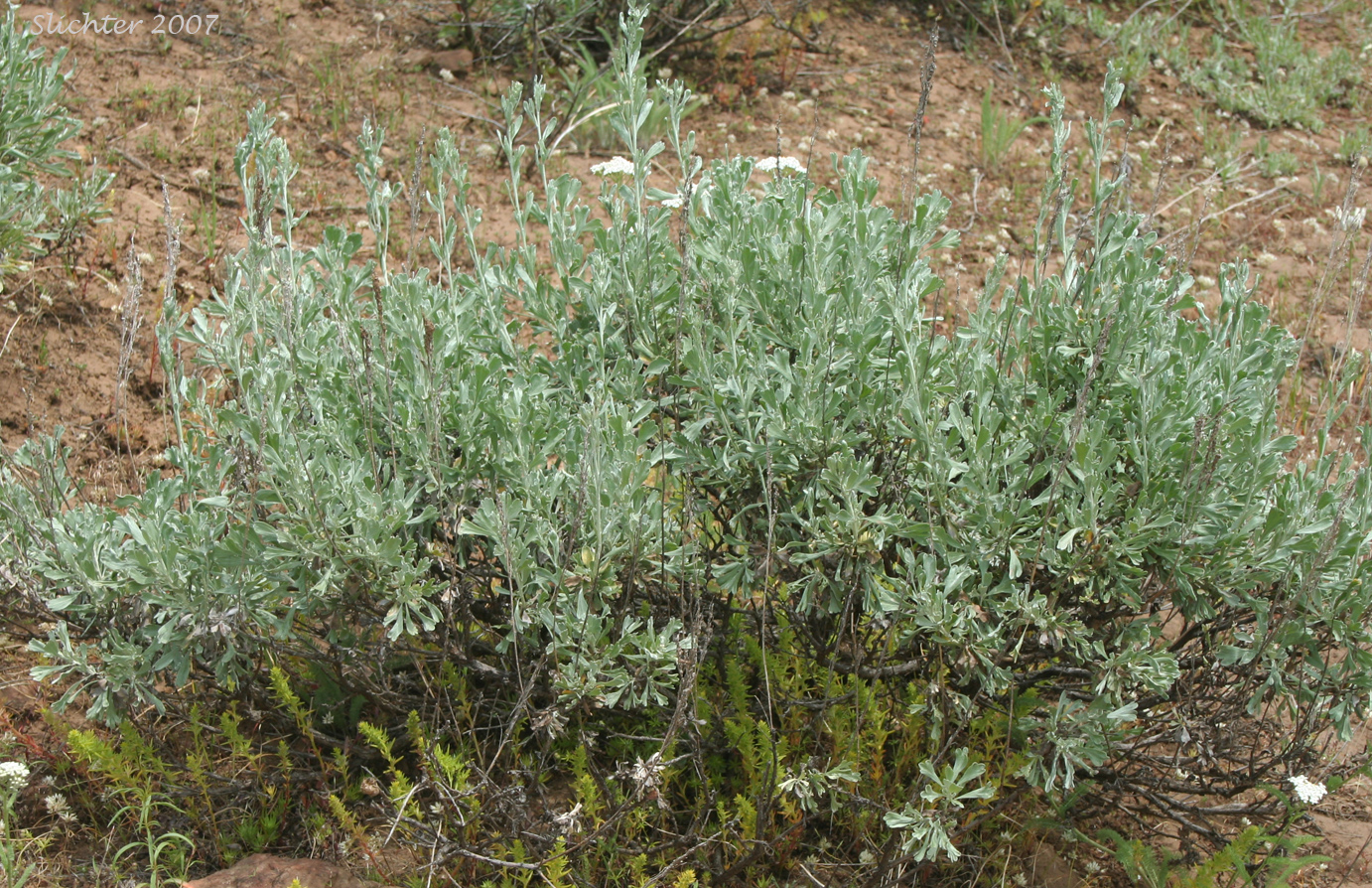
The photo above shows mountain big sagebrush (ssp. vaseyana) as seen along the Umatilla Rim Trail on the northeastern edge of the North Fork Umatilla Wilderness.......June 24, 2007. Other plants at this site include wormleaf stonecrop, yarrow and wild peony.
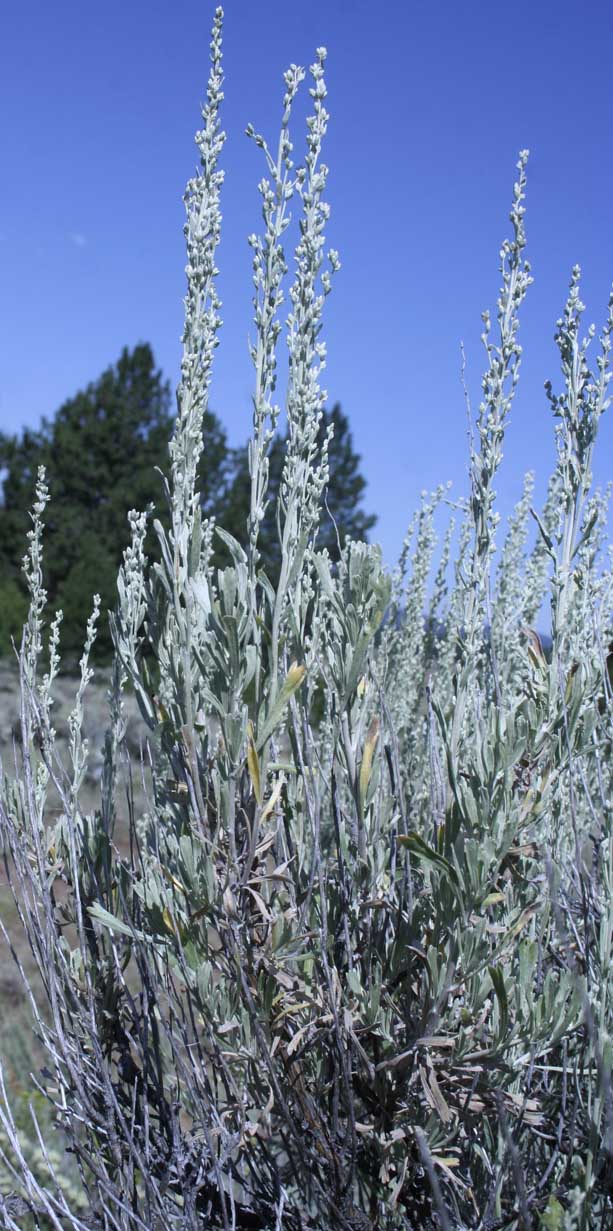 -
- 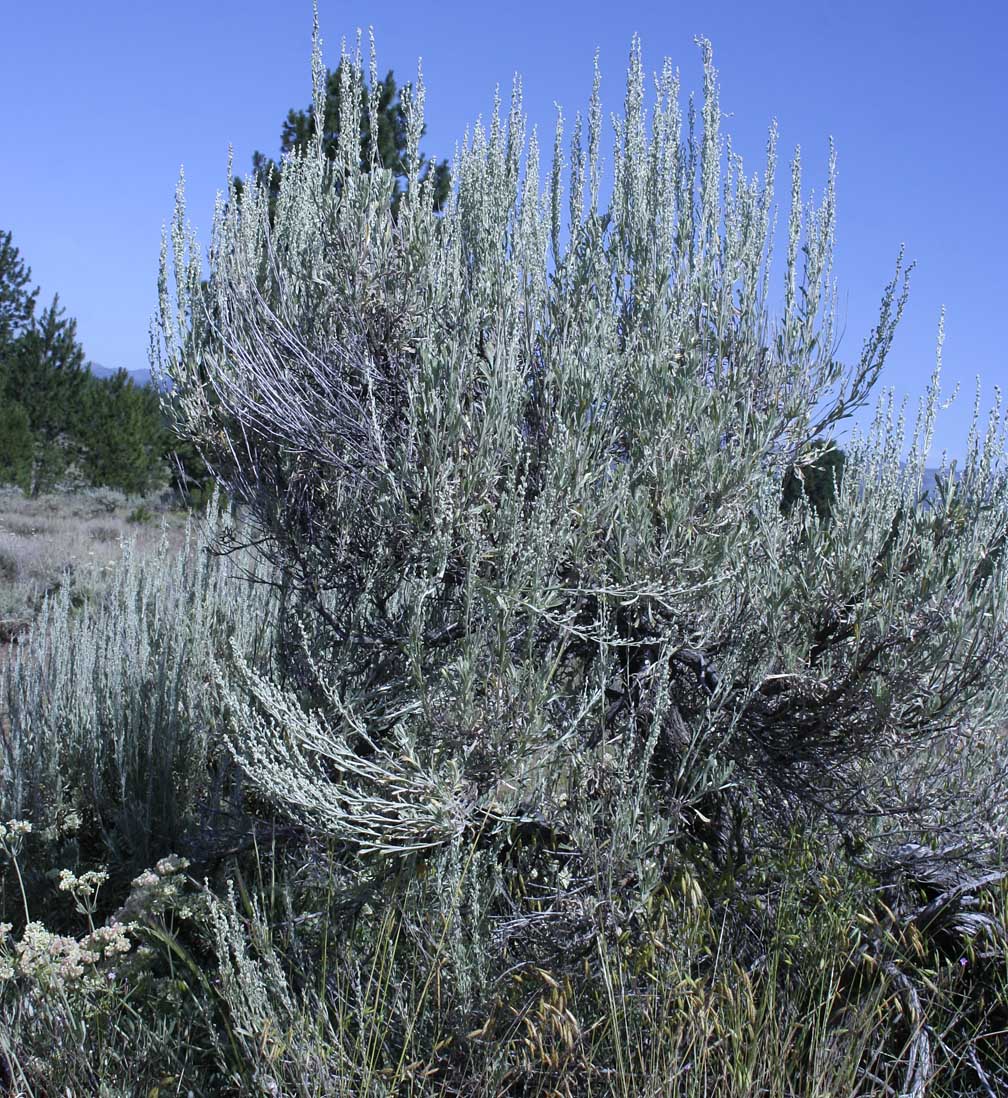
Additional examples of mountain big sagebrush (ssp. vaseyana) beginning to bloom along Forest Service Road #1647 in southeastern Logan Valley, Malheur National Forest.......August 3, 2011.
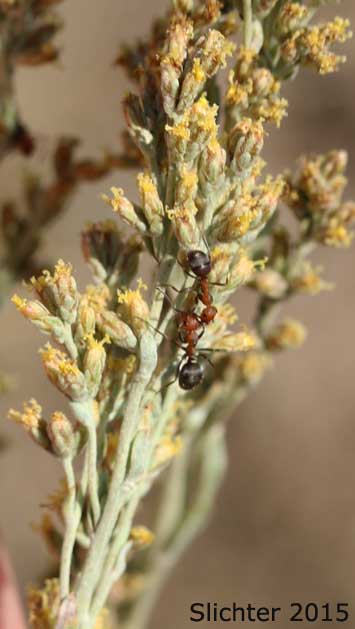 -
- 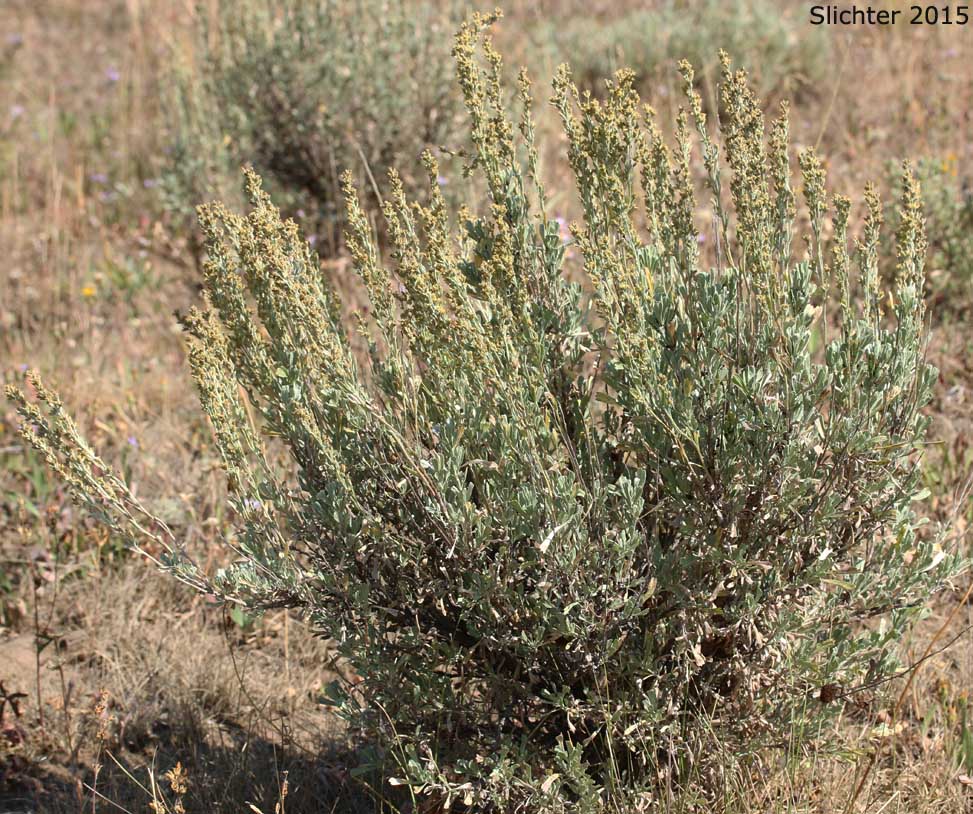 -
- 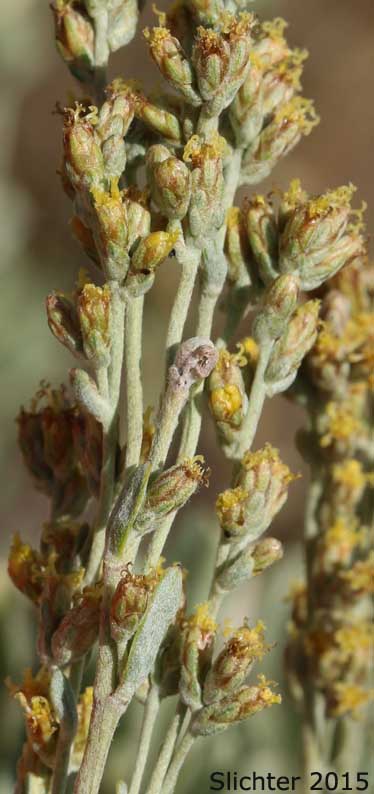
Mountain big sagebrush blooming on uplands at the southern periphery of Summit Prairie, Malheur National Forest.........August 10, 2015.
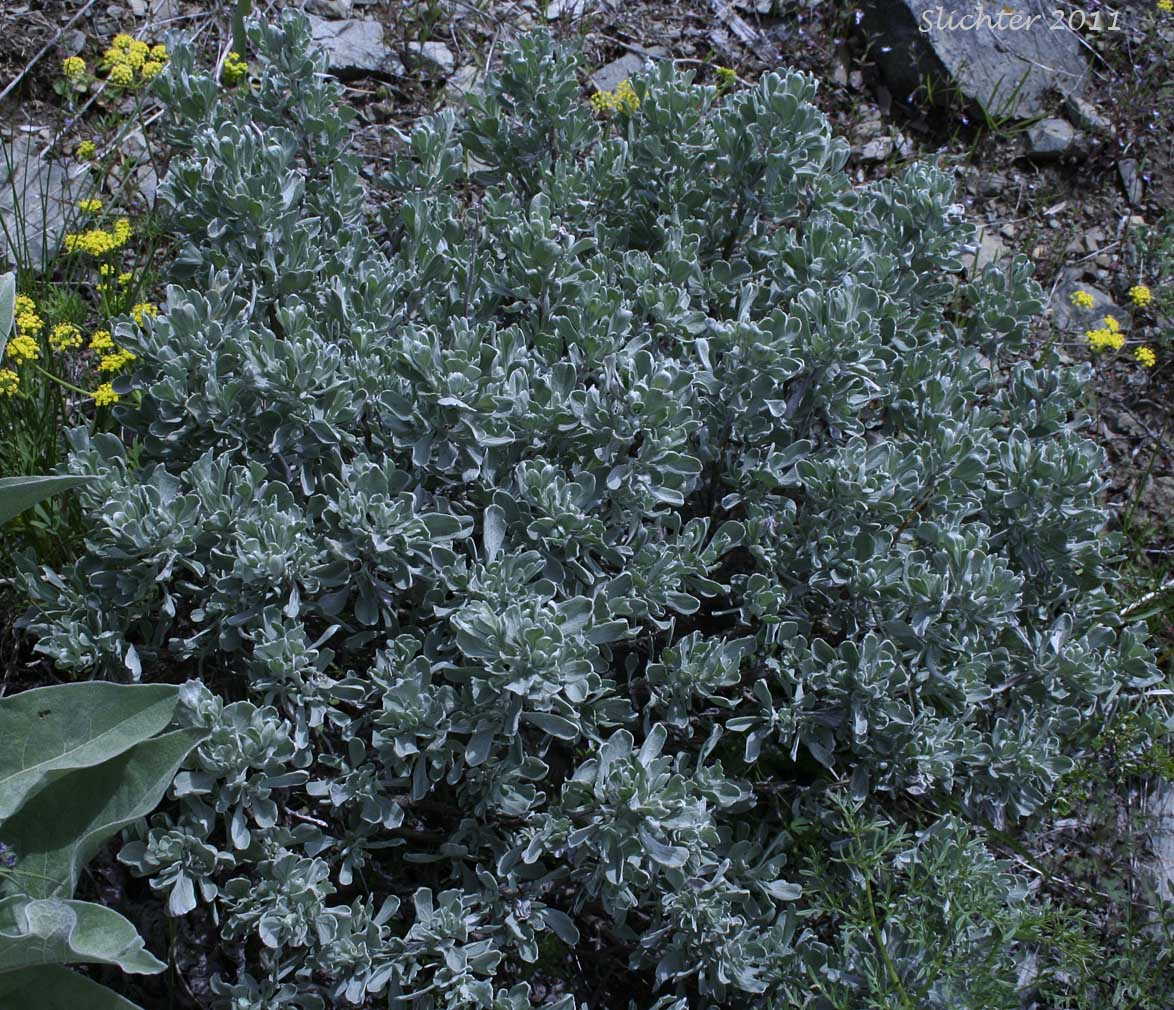 -
- 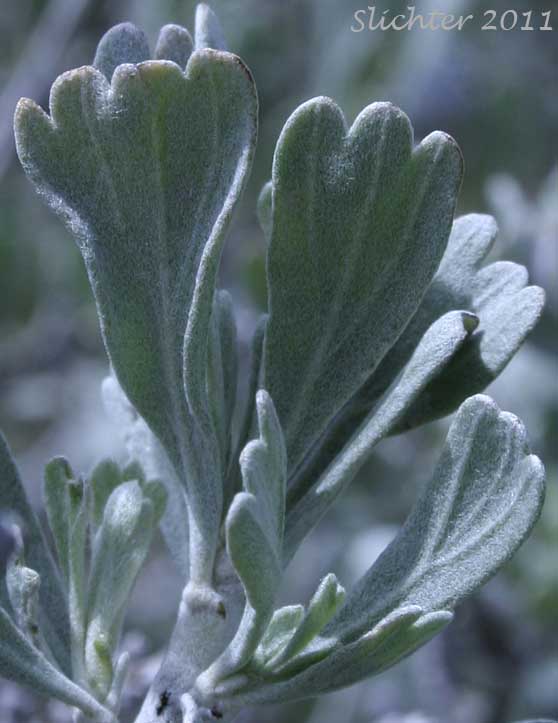
Mountain big sagebrush seen early in the season (with the melting snow) atop Lookout Mountain, Okanogan National Forest........June 10, 2011.
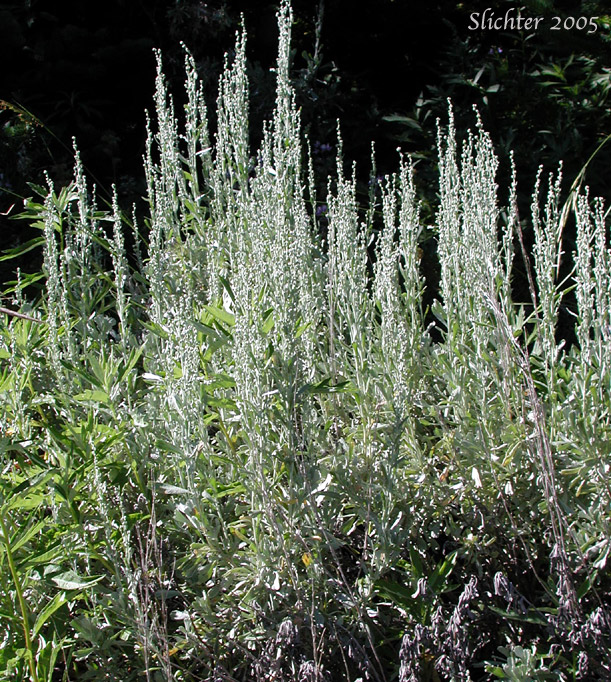
The photo above shows mountain big sagebrush (ssp. vaseyana) as seen on the south-facing slopes of the Ridge of Wonders at the southeastern corner of Mt. Adams.........July 30, 2005. This species may be found at this location between the elevations of 5500-6500', with the bulk of the plants below 6000'.
Paul Slichter